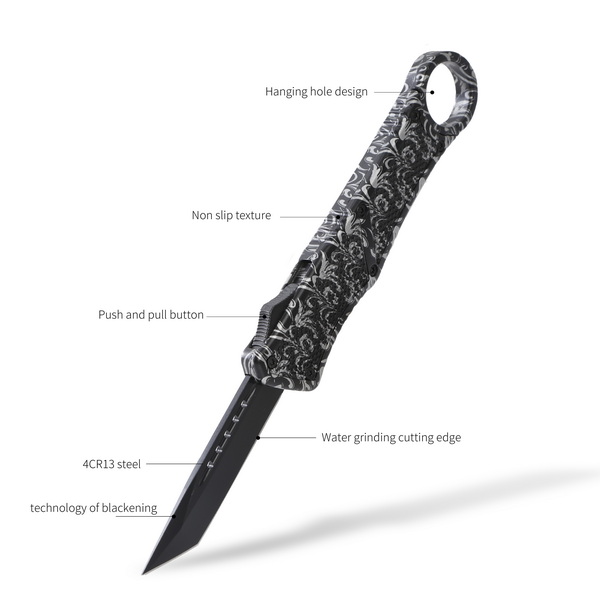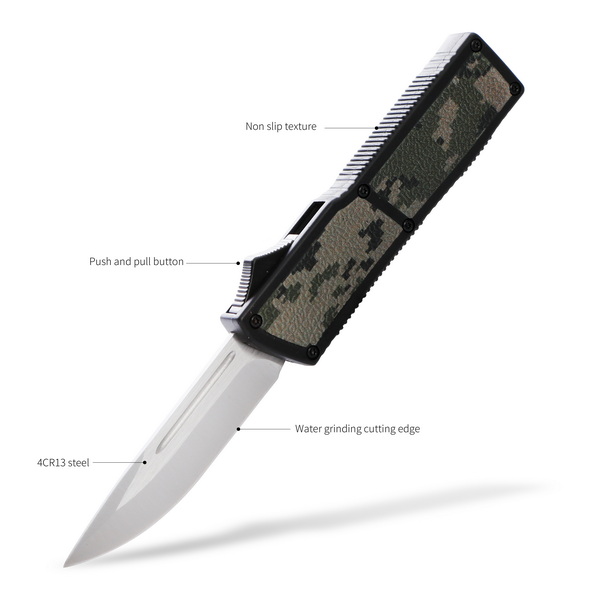Views: 222 Author: Leah Publish Time: 2025-10-28 Origin: Site











Content Menu
● The Historical Legacy of Knife Making in Europe
● Major Production Regions and Their Influence
>> Germany: Solingen, "The City of Blades"
>>> WÜSTHOF: Masters of Solingen
>>> GÜDE, FELIX, BURGVOGEL, F.DICK, and Giesser
>> France: Thiers, Epicenter of Cutlery
>>> Goyon Chazeau, Claude Dozorme, K-Sabatier, Chambriard
>> Italy: Tuscany, Scarperia Firenze
● European Knife Traditions, Styles, and Materials
● OEM Knife Manufacturing: Private Label and B2B Solutions
>> Key Benefits for Brands and Wholesalers
>>> Viper (Italy), Kizer Cutlery (China), WE Knife Co. (China)
● Iconic European Knife Designs
● The Role of Knives Manufacturers and Suppliers in Modern European Culture
● Business Tips for Partnering with European Suppliers
● FAQ
>> 1. What are the primary regions for European knives manufacturers and suppliers?
>> 2. Why are knives from Solingen and Thiers so highly regarded?
>> 3. What types of knives do European manufacturers offer?
>> 4. Are OEM and private label options available for global brands?
>> 5. How can wholesalers and producers ensure product authenticity and quality?
Europe stands as a global icon for knives manufacturers and suppliers, with centuries of innovation, artistry, and technological advancement behind each blade. This comprehensive article explores the roots, craftsmanship, and business dynamics of Europe's leading knife makers, their prominent regions, traditions, and the role of OEM services for global brands and wholesalers.

European knifemaking is deeply interwoven with cultural traditions, technological breakthroughs, and regional pride. Knives in Europe were once symbols of status, ceremonial objects, and practical everyday tools. The Middle Ages saw the rise of knightly daggers—status symbols embellished with engravings and gemstones—used both in combat and as courtly ornaments. Pocket knives and “peasant defense knives” emerged for craftsmen and villagers, as folding knives with spring mechanisms showcased refined engineering by the late medieval period. At grand feasts, tables were set with ornately handled carving knives, underscoring the central role of blades in both cuisine and ceremony.[1][2]
Solingen, a city in North Rhine-Westphalia, is forever linked with superior blades and remains a bedrock for Europe's knives manufacturers and suppliers. From the Middle Ages, the city pioneered metallurgy, eventually introducing stainless steel—a composition that resists damage and corrosion while holding a sharp edge. The “Made in Solingen” mark is globally recognized for its geographical protection and quality assurance.[5]
Founded in 1814, WÜSTHOF turned a humble iron workshop into a world-renowned producer of chef knives, kitchen sets, and precision cutlery. The factory persists in blending robotics and hand craftsmanship, ensuring every piece meets exacting standards for sharpness, durability, and ergonomic comfort.[5]
These brands, each with roots extending back centuries, have forged German knifemaking identity. Their range—from professional catering knives to robust bread and chef knives—exemplifies Germany's commitment to edge retention, safety, and high performance.
The town of Thiers is celebrated as Europe's knife capital, famous for fine folding knives and kitchen cutlery. Thiers' unique labor division, passed through generations, bolstered productivity, skill specialization, and high-quality output. By the 18th century, Thiers was exporting its knives worldwide, supporting local economic growth and artisanal vitality.[6][8]
The history of the Laguiole knife began in the 1800s, crafted for farmers and shepherds seeking reliable blades. Innovations such as the spring lock, fly/bee symbol, and the “yatagan” shaped blade set the Laguiole apart as a prestigious object, often used for gifts and special occasions. Le Thiers knives followed, defined by community collaboration to promote craftsmanship and enhance product standards.[4][6]
These French brands honor culinary heritage through the meticulous making of chef, folding, and pocket knives, distinguished by elegant handles, exotic materials, and rigorous controls. Their knives, widely favored by chefs, collectors, and outdoor enthusiasts, encapsulate the artistry of Thiers.[4][6]
Scarperia, known for its knife-making legacy, captures Italy's flair for style and substance. Saladini and Berti, two famous Tuscan producers, focus on stainless and carbon steel blades, pairing them with polished wooden handles. The fusion of heritage and innovation drives their success globally.
European knives owe their popularity to diverse traditions and technical mastery. Throughout the Renaissance, knives evolved from symbols of nobility to multifunctional tools for everyday use. Handles ranged from local woods to fine ivory and horn, while blades advanced from carbon steel to rust-resistant stainless alloys.[1][2]
Modern European knives integrate advanced metallurgy, robotics, and refined grinding. Yet, traditional skills—engraving, hand-polishing, and balancing—remain central to their prestige. Regions like Solingen and Thiers are fiercely protective of their identity, securing geographical trademarks to maintain excellence.

OEM (Original Equipment Manufacturer) and private label services in Europe empower global brands, wholesalers, and distributors to create custom knife solutions. Top knives manufacturers and suppliers offer flexible MOQs, comprehensive design consultancy, and tailored packaging to fit diverse markets.
- Ability to develop exclusive knife lines for target customers.
- Access to heritage, quality assurance, and innovation.
- Streamlined supply chain management and logistics support.
- Enhanced brand value via geographical trademarks (e.g., “Made in Solingen” or “Le Thiers”).[6][5]
While not European, LeeKnives provides OEM solutions to international brands looking to source from Asia with European quality standards.
Viper specializes in high-precision Italian blades, ideal for outdoor, kitchen, and tactical use. Kizer Cutlery and WE Knife Co. combine modern alloys with customizable features, making them robust partners for growing brands.
- Chef's Knives: Tall, broad blades ideal for slicing, dicing, and chopping.
- Santoku and Utility Knives: Preferred for precision tasks, prevalent in both European and international cuisine.
- Folding Knives: From noble daggers to contemporary pocket models for artisans and outdoor enthusiasts.
- Hunting Knives: Durable, versatile, with ergonomic grips for safety and balance.
- Bread and Carving Knives: Serrated blades enable effortless slicing in culinary settings.
Even today, European knives are more than culinary tools—they are expressions of regional pride, heritage, and artistry. From family-owned workshops to high-tech factories, European knives manufacturers and suppliers uphold rigorous standards. Their products grace kitchens, dinner tables, and outdoor pursuits around the world, inspiring new generations of collectors and chefs.[2][1][4][5]
- Verify geographical trademarks and authenticity (e.g., “Made in Solingen,” “Le Thiers”).[5][6]
- Establish clear product specifications, certifications, and quality control measures.
- Understand regional traditions to highlight branding potential.
- Explore private label and OEM solutions for exclusive product lines.
Europe's knives manufacturers and suppliers form the backbone of the worldwide blade industry, merging tradition, innovation, and exceptional quality. Cities like Solingen and Thiers have fostered decades of advancement in metallurgy, design, and artistic craftsmanship. These manufacturers serve both the private label and wholesale communities with customizable, premium knife offerings—cementing their status in kitchens, restaurants, and outdoor environments globally. For brands, wholesalers, and distributors, collaboration with top European knife makers remains a strategic choice for expanding quality, heritage, and market reach.[4][6][5]

- Germany's Solingen and France's Thiers lead in blade innovation, with Italy's Tuscany also prominent for artisan knives.[6][4][5]
- These regions combine centuries-old tradition, specialized skills, and geographic protections that guarantee excellence in every product.[4][5][6]
- Chef, utility, folding, hunting, bread, and carving knives are among the specialties, crafted for durability and distinctive style.[2][5]
- Yes. Many manufacturers provide full design, branding, and packaging customization for businesses seeking exclusive solutions.
- By partnering with certified manufacturers, verifying regional trademarks, and requesting product documentation for quality control.[5][6][4]
[1](https://bpsknives.com/the-european-knife-traditions-cultural-influences-on-the-blade-industry/)
[2](https://www.battlemerchant.com/en/blog/knives-a-journey-through-cultures-and-traditions)
[3](https://blademag.com/knifemaking/iconic-knives-europe)
[4](https://laguiole.store/the-company/history-of-the-laguiole-knife/)
[5](https://wusthof.com/blogs/the-chefs-table/a-look-inside-the-cutlery-center-of-the-world)
[6](https://en.wikipedia.org/wiki/Cutlery_of_Thiers)
[7](https://gallantry.com/blogs/journal/the-complete-history-of-the-pocket-knife)
[8](https://www.bbc.com/travel/article/20170425-europes-surprising-knife-capital)
[9](https://typemyknife.com/en/the-development-of-european-kitchen-knives-t-1/)
[10](https://bpsknives.com/geography-of-knife-traditions-how-different-cultures-influenced-the-knife-industry-in-south-america/)